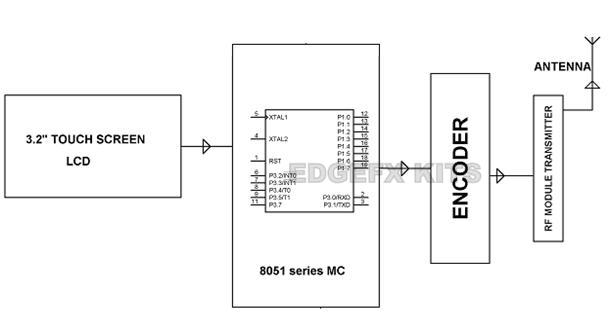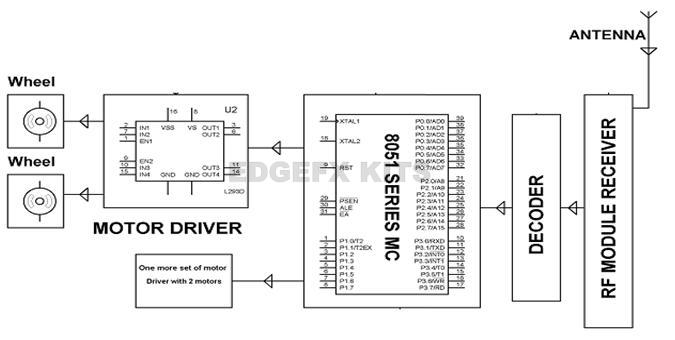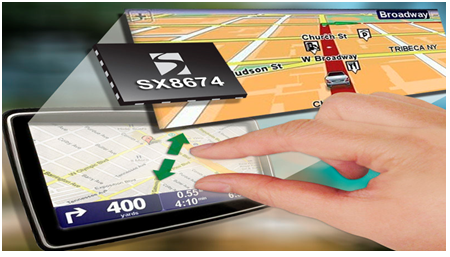Touch screen technology is the direct manipulation type gesture based technology. Direct manipulation is the ability to manipulate digital world inside a screen. A Touch screen is an electronic visual display capable of detecting and locating a touch over its display area. This is generally refers to touching the display of the device with a finger or hand. This technology most widely used in computers, user interactive machines, smart phones, tablets etc to replace most functions of the mouse and keyboard.


Touch screen technology has been around for a number of years but advanced touch screen technology has come on in leaps and bounds recently. Companies are including this technology into more of their products. The three most common touch screen technologies include resistive, capacitive and SAW (surface acoustic wave). Most of low end touch screen devices contain on a standard printed circuit plug-in board and are used on SPI protocol. The system has two parts, namely; hardware and software. The hardware architecture consists of a stand-alone embedded system using an 8-bit microcontroller, several type of interface and driver circuits. The system software driver is developed using an interactive C programming language.
Types of Touch Screen Technology:
The Touch screen is a 2-dimensional sensing device made of 2 sheets of material separated by spacers. There are four main touch screen technologies: Resistive, Capacitive, Surface Acoustical wave (SAW) and infrared (IR).
Resistive:
Resistive touch screen is composed of a flexible top layer made of polythene and a rigid bottom layer made of glass separated by insulating dots, attached to a touch screen controller. Resistive touch screen panels are more affordable but offering only 75% of light monitor and the layer can be damaged by sharp objects. Resistive touch screen is further divided into 4-, 5-, 6-, 7-, 8- wired resistive touch screen. The construction design of all these modules is similar but there is a major distinction in each of its method to determine the coordinates of touch.
Capacitive:
A capacitive touch screen panel is coated with a material that stores electrical charges. The capacitive systems can transmit up to 90% of light from the monitor. It is divided into two categories. In Surface-capacitive technology only one side of the insulator is coated with a conducting layer.
Whenever a human finger touches the screen, conduction of electric charges occurs over the uncoated layer which results in the formation of dynamic capacitor. The controller then detects the position of touch by measuring the change in capacitance at the four corners of the screen.
In projected capacitive technology, the conductive layer (Indium Tin Oxide) is etched to form a grid of multiple horizontal and vertical electrodes. It involves sensing along both the X and Y axis using clearly etched ITO pattern. For increasing the accuracy of the system, the projective screen contains a sensor at every interaction of the row and column.
Infrared:
In infrared touch screen technology, an array of X and Y axis is fitted with pairs of IR Leds and photo detectors. Photo detectors will detect any image in the pattern of light emitted by the Leds whenever the user touches the screen.
Surface Acoustic wave:
The surface acoustic wave technology contains two transducers placed along X-axis and Y-axis of the monitor’s glass plate along with some reflectors. When the screen is touched, the waves are absorbed and a touch is detected at that point. These reflectors reflect all electrical signals sent from one transducer to another. This technology provides excellent through put and quality.
Components and working of touch screen:
A basic touch screen is having a touch sensor, a controller, and a software driver as three main components. The touch screen is needed to be combined with a display and a PC to make a touch screen system.
Touch sensor:
The sensor generally has an electrical current or signal going through it and touching the screen causes a change in the signal. This change is used to determine the location of the touch of the screen.
Controller:
A controller will be connected between touch sensor and PC. It takes information from sensor and translates it for understanding of PC. The controller determines what type of connection is needed.
Software driver:
It allows computer and touch screen to work together. It tells OS how to interact the touch event information that is sent from the controller.
Application – Remote control using Touch screen technology:
The touch screen is one of the simplest PC interfaces to use, for larger number of applications. A touch screen is useful for easily accessing the information by simply touching the display screen. The touch screen device system is useful in ranging from industrial process control to home automation.

Image Source – Edgefx Kits
In real time by simply touching the touch screen and with a graphical interface, everyone can monitor and control complex operations.

Image Source – Edgefx Kits
At the transmission end using a touch screen control unit, some directions will send to the robot for movinginto a specific direction like forward, backward, rotating left and rotating right. At the receiving end four motors are interfaced with the microcontroller. Two of them will be used for Arm and grip movement of the robot and other two are used for body movement.
Some remote operations can be done with touch screen technology using wireless communication for answering calls, locating and communicating with staff, and operating vehicles and robots. For this purpose RF communication or infrared communication may be used.
A real time Application: Controlling home appliances using Touch Screen Technology
It is possible to control the electrical appliances at home using touch screen technology. The whole system works by sending input commands from the touch screen panel through the RF communication which are received at the receiver end and control the switching of loads.
At the transmitter end, a touch screen panel is interfaced to the Microcontroller through a touch screen connector. When an area on the panel is touched, the x and y coordinates of that area are sent to the Microcontroller which generates a binary code from the input.
This 4 bit binary data is given to the data pins of the H12E encoder which develops a serial output. This serial output is now sent using a RF module and an antenna.
At the receiver end, the RF module receives the coded serial data, demodulates it and this serial data is given to the H12D decoder. This decoder converts this serial data into the parallel data which pertains to the original data sent by the microcontroller at transmission end. The microcontroller at the receiver end receiver end, receives this data and accordingly sends a low logic signal to the corresponding optoisolator which in turn switches on the respective TRIAC to allow AC current to the load and the respective load is switched on.


























